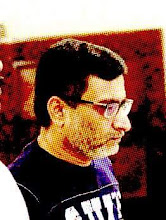As I have recently discovered, Sketching on Location, is an exciting activity. It takes creativity and connecting with the subject to a new level. Most important aspect of sketching on location, is finding the right 'frame'.
While sketching from references, these reference images already come with frames, with a bounded rectangle. One can still do some cropping. But a lot of it is already fixed. On location, one must find the nice view, with the good balance. Typically, something interesting strikes you, and you start looking at the subject, and spontaneously begin sketching. This spontaneity is the fun of sketching.
At times, you might look for not only the subject, but the proper context too. Thumbnails are a great way to explore a scene.
As Glenn Vilppu the master, elaborates, in his classic manual, Sketching on Location, these are tools of importance. The idea is to abstract the scene, and create highly simplified views in very small size.
Here are some tools that you can make that can come handy.
A viewfinder
- Take the heavy backside of a used sketchbook
- Draw a rectangle about 2.5" by 3.5" (choose what works for you)
- Leave 1/2 inch on three sides, and an inch on the left side(to make it easy to hold)
- Cut these lines with a craft knife.
- Don't throw away the piece in the middle yet! You can use it to vary the ratio of the view!
A Mini Sketch book
Unless we are making a series of sketches with some sequence, it helps to focus on one picture at a time.
- Take a bunch of copy papers
- Cut each into 8 small pieces
- Take the heavy backside of a used sketchbook
- A slightly thick sheet for a cover
- cut these to the size of the small pieces of paper.
- Punch 4 to 5 holes on one side
- Take some spiral wire, cut it to size, and bind this into a book!










